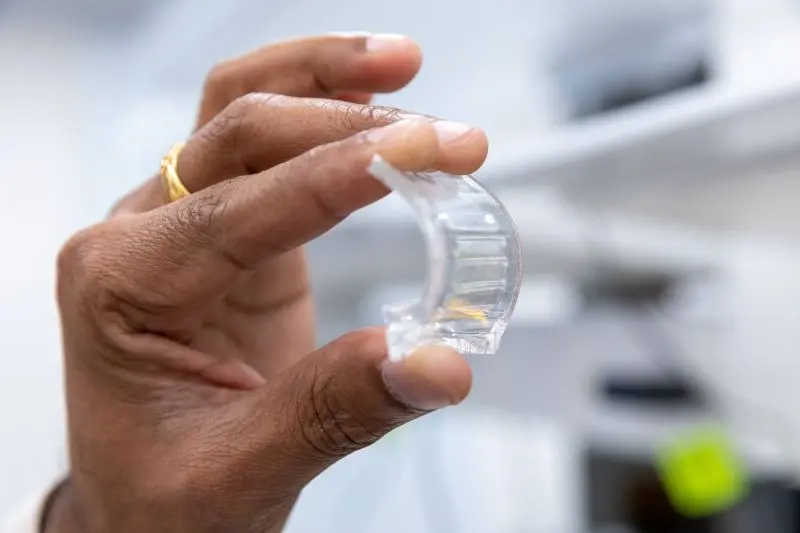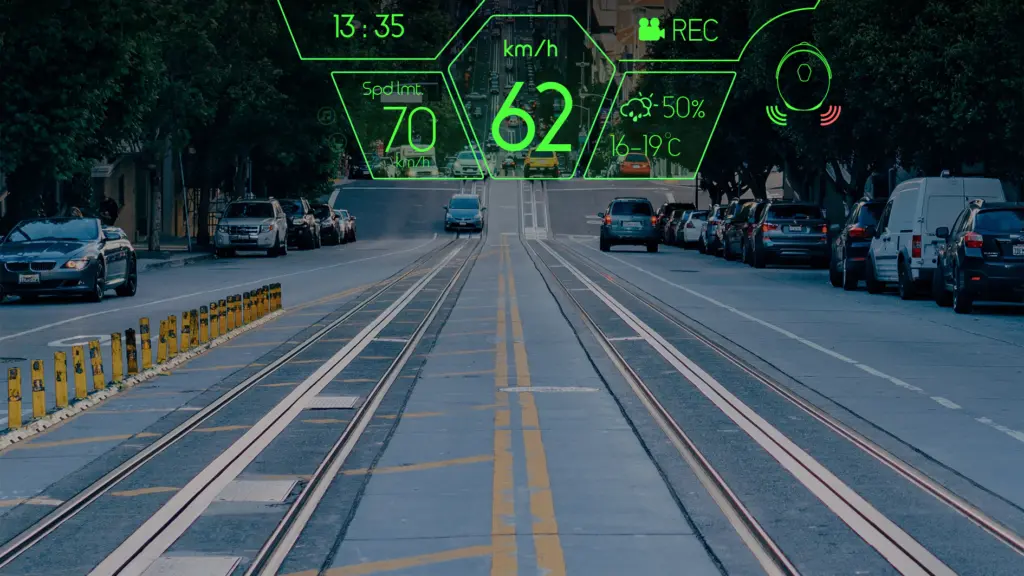Researchers at the University of Melbourne in collaboration with KDH Design Corporation, and the Melbourne Centre for Nanofabrication have made an important breakthrough in augmented reality (AR). They have successfully created the world’s first flexible, transparent AR display screen using 3D printing and low-cost materials. This innovation has the potential of revolutionizing the use AR across various industries.

AR technology superimposes digital content onto the real world, enhancing the user’s perception and interaction with their environment in real time. It has been difficult to create flexible AR technology which can adapt to various angles of light sources. Current mainstream AR production relies heavily on glass substrates. This involves time-consuming, expensive processes, such as lamination, cutting and etching microstructures. The yield of these processes is low and they are hard to integrate into product designs.
Under the leadership of Associate Professor Ranjith Unnithan from the University of Melbourne and Professor Christina Lim as well as Professor Thas Nirmalathas, the KDH Design Corporation team achieved a breakthrough by developing a translucent AR display screen with low-cost optical-quality plastic and polymer materials. This is a first in the world of AR displays.

The team used additive manufacturing techniques (also known as 3D Printing) in the fabrication process. This was a groundbreaking approach in the AR displays field. KDH Design Corporation, which is known for producing AR motorbike helmets as well as military goggles will incorporate this technology to the visors on head-worn displays such AR glasses, AR goggles and helmets.
This new display screen is flexible and versatile. It can be bent and shaped to fit any shape, even curved surfaces or uneven ones. The flexibility of the display screen allows designers to create products with a variety of form factors. The display screen is transparent to ensure that users can view digital content in a natural way.
Additive manufacturing allows for precise control of design and production. This results in better-quality products. The technology also allows for more cost-effective, scalable mass production.
Ranjith Unnithan said this breakthrough is a major advancement in AR technologies with many potential applications. In the gaming sector, for instance, transparent AR displays that are flexible could be integrated in gaming accessories, such as goggles or glasses, to create a more realistic and immersive gaming experience. AR displays can be integrated into educational tools and simulations for interactive and engaging learning. AR displays in healthcare could be used for medical training, providing surgeons real-time data during operations. Potential applications include areas like transport and tourism.
Jeremy Lu (CEO of KDH Design and alumnus of the University of Melbourne) stated that they had achieved their ultimate AR technology after four years of research. The technology is lightweight, ultra-thin and highly energy-efficient. It’s perfect for applications such as AR goggles and glasses. AR displays for car windscreens and transparent displays are also in the works.
KDH Corporation’s CTO, Younger Liang, emphasized that the collaboration with the University of Melbourne researchers enabled the development of a prototype that aligned with their vision. Now they are ready to commercialize the technology in a variety of exciting applications.
Professor Nicolas Voelcker of the Melbourne Centre for Nanofabrication expressed his excitement at the prospect of working with KDH Design and the University of Melbourne in order to develop new flexible materials for AR display. Melbourne Centre for Nanofabrication is equipped with the latest technologies and process engineers to create world-class nanof